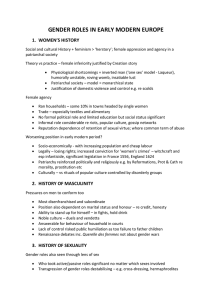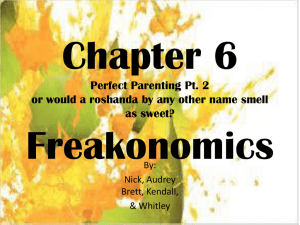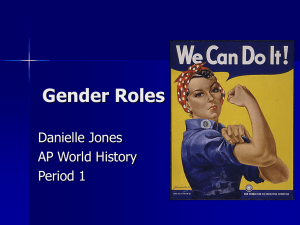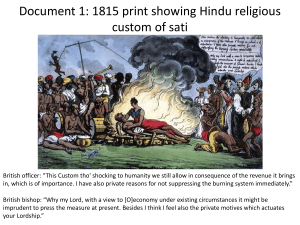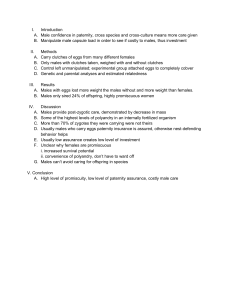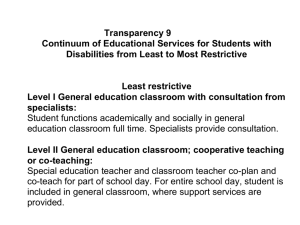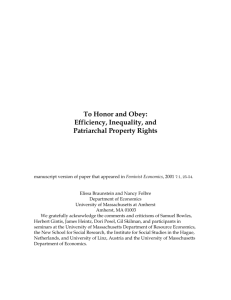Gender
advertisement
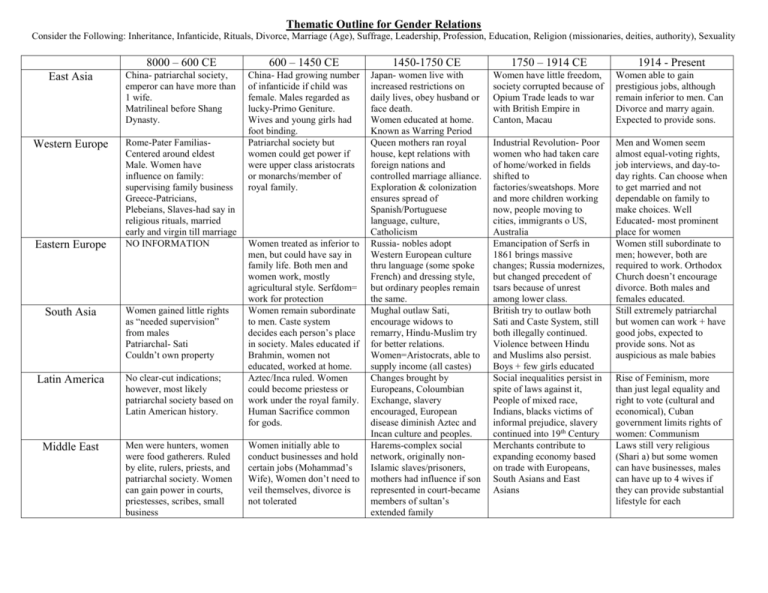
Thematic Outline for Gender Relations Consider the Following: Inheritance, Infanticide, Rituals, Divorce, Marriage (Age), Suffrage, Leadership, Profession, Education, Religion (missionaries, deities, authority), Sexuality 8000 – 600 CE 600 – 1450 CE 1450-1750 CE 1750 – 1914 CE 1914 - Present East Asia China- patriarchal society, emperor can have more than 1 wife. Matrilineal before Shang Dynasty. Women able to gain prestigious jobs, although remain inferior to men. Can Divorce and marry again. Expected to provide sons. Rome-Pater FamiliasCentered around eldest Male. Women have influence on family: supervising family business Greece-Patricians, Plebeians, Slaves-had say in religious rituals, married early and virgin till marriage NO INFORMATION Japan- women live with increased restrictions on daily lives, obey husband or face death. Women educated at home. Known as Warring Period Queen mothers ran royal house, kept relations with foreign nations and controlled marriage alliance. Exploration & colonization ensures spread of Spanish/Portuguese language, culture, Catholicism Russia- nobles adopt Western European culture thru language (some spoke French) and dressing style, but ordinary peoples remain the same. Mughal outlaw Sati, encourage widows to remarry, Hindu-Muslim try for better relations. Women=Aristocrats, able to supply income (all castes) Changes brought by Europeans, Coloumbian Exchange, slavery encouraged, European disease diminish Aztec and Incan culture and peoples. Harems-complex social network, originally nonIslamic slaves/prisoners, mothers had influence if son represented in court-became members of sultan’s extended family Women have little freedom, society corrupted because of Opium Trade leads to war with British Empire in Canton, Macau Western Europe China- Had growing number of infanticide if child was female. Males regarded as lucky-Primo Geniture. Wives and young girls had foot binding. Patriarchal society but women could get power if were upper class aristocrats or monarchs/member of royal family. Industrial Revolution- Poor women who had taken care of home/worked in fields shifted to factories/sweatshops. More and more children working now, people moving to cities, immigrants o US, Australia Emancipation of Serfs in 1861 brings massive changes; Russia modernizes, but changed precedent of tsars because of unrest among lower class. British try to outlaw both Sati and Caste System, still both illegally continued. Violence between Hindu and Muslims also persist. Boys + few girls educated Social inequalities persist in spite of laws against it, People of mixed race, Indians, blacks victims of informal prejudice, slavery continued into 19th Century Merchants contribute to expanding economy based on trade with Europeans, South Asians and East Asians Men and Women seem almost equal-voting rights, job interviews, and day-today rights. Can choose when to get married and not dependable on family to make choices. Well Educated- most prominent place for women Women still subordinate to men; however, both are required to work. Orthodox Church doesn’t encourage divorce. Both males and females educated. Still extremely patriarchal but women can work + have good jobs, expected to provide sons. Not as auspicious as male babies Eastern Europe South Asia Women gained little rights as “needed supervision” from males Patriarchal- Sati Couldn’t own property Latin America No clear-cut indications; however, most likely patriarchal society based on Latin American history. Middle East Men were hunters, women were food gatherers. Ruled by elite, rulers, priests, and patriarchal society. Women can gain power in courts, priestesses, scribes, small business Women treated as inferior to men, but could have say in family life. Both men and women work, mostly agricultural style. Serfdom= work for protection Women remain subordinate to men. Caste system decides each person’s place in society. Males educated if Brahmin, women not educated, worked at home. Aztec/Inca ruled. Women could become priestess or work under the royal family. Human Sacrifice common for gods. Women initially able to conduct businesses and hold certain jobs (Mohammad’s Wife), Women don’t need to veil themselves, divorce is not tolerated Rise of Feminism, more than just legal equality and right to vote (cultural and economical), Cuban government limits rights of women: Communism Laws still very religious (Shari a) but some women can have businesses, males can have up to 4 wives if they can provide substantial lifestyle for each
